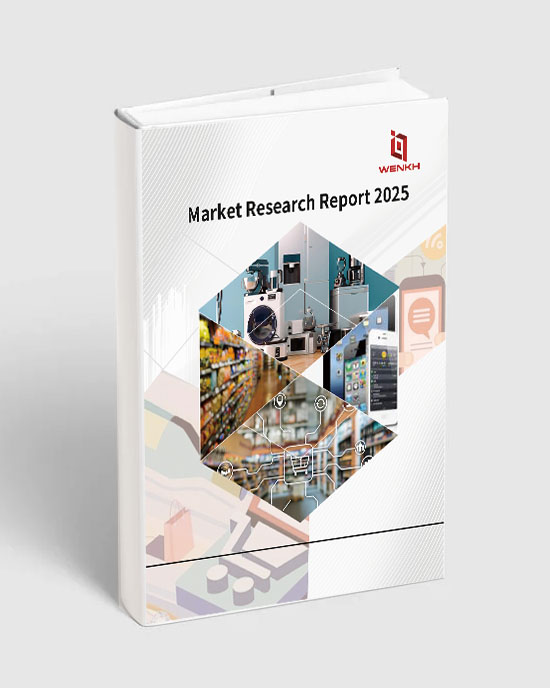
Global Hydration Bottle Market Size, Competition Landscape and Supply Chain Research Report 2025



Research Summary
A hydration bottle is a portable container designed specifically for carrying and dispensing liquids, primarily water, to help individuals maintain proper hydration throughout the day. Typically made from materials like plastic, stainless steel, or glass, hydration bottles come in various sizes, shapes, and designs. Many feature a secure lid or cap to prevent spills and contamination, and some incorporate additional features such as built-in strainers, infusers for flavoring water with fruits, or measurement markings for tracking fluid intake. Hydration bottles are popular accessories for sports, fitness activities, outdoor adventures, work, and daily routines, serving as a convenient and environmentally friendly alternative to single-use plastic bottles. Their versatility and portability make them essential for individuals seeking a practical and sustainable way to stay hydrated on the go.
According to WENKH research statistics, the global Hydration Bottle market size will reach 4,461.75 Million USD in 2025 and is projected to reach 6,775.56 Million USD by 2032, with a CAGR of 6.15% (2025-2032). Among them, the Asia-Pacific Hydration Bottle market is undergoing rapid changes, reaching Million USD in 2025, accounting for approximately % of the global market share. It is projected to reach Million USD by 2032.
Consumer preferences in the hydration bottle market are increasingly shaped by growing health consciousness and sustainability awareness. As individuals become more attentive to hydration as part of their wellness routines, demand for reusable water bottles with health-tracking features, such as time markers and smart sensors, is rising. This trend is particularly strong among millennials and Gen Z consumers, who are more likely to integrate wellness tools into their daily lives. Functional design, ergonomic portability, and aesthetic appeal have become key drivers of purchase decisions, prompting brands to focus on innovative product forms and customizable options.
Sustainability has emerged as a powerful motivator influencing purchasing behavior. The shift away from single-use plastics, reinforced by regulatory bans and eco-conscious movements, has significantly boosted sales of reusable bottles made from stainless steel, BPA-free plastic, and biodegradable materials. Consumers are also favoring brands with transparent environmental practices, such as carbon-neutral manufacturing or recyclable packaging. The intersection of lifestyle branding and environmental values is leading to premiumization, where consumers are willing to pay more for bottles that align with their ethical and functional expectations.
The global Hydration Bottle market is highly competitive, with key market players including Newell Brands, Thermos, CamelBak, Yeti Holding, Pacific Market International, Hydro Flask, S'well, Tupperware Brands, Klean Kanteen, Cascade Designs, BRITA GmbH, Zojirushi, Lock & Lock, Haers, Nan Long, Fuguang, ShineTime, Solidware, Powcan, Cille, etc. This report categorizes the competitive landscape of the global Hydration Bottle market into three tiers based on annual revenue, with the top three market players holding approximately % of the total market share.
This report provides an in-depth analysis of the global Hydration Bottle market, including market size, price trends, market status and future development prospects. It particularly focuses on the market share, product characteristics, pricing, revenue, sales volume and gross profit margin of major manufacturers in the global Hydration Bottle industry. Additionally, this report provides an in-depth analysis of the market status and future development trends of different segments of Hydration Bottle and their downstream application fields.
In terms of data coverage, this report includes extensive time-series data. Historical data spans from 2020 to 2024, providing a solid foundation for analyzing market development trends. The year 2025 is used as a base year to accurately assess the current market landscape, while forecast data extends from 2026 to 2032, using scientific analysis methods and models to offer forward-looking projections and insights into the market's future trajectory. This provides valuable reference information for industry participants and stakeholders.
The report covers regions and countries including North America, Europe, China, Asia Pacific (excluding China), Latin America, the Middle East, and Africa. It particularly focuses on the revenue and sales volume of Hydration Bottle in these regions and countries, as well as the market share of key market players in each region. The report provides an in-depth analysis of the regional distribution and future development trends of the Hydration Bottle market. By considering local policies, this report evaluates the market prospects of Hydration Bottle in each region and country, aiming to help companies gain a comprehensive understanding of the industry characteristics and development potential in different regions, optimize regional business layout, and develop precise market strategies to achieve global development goals.
This report places significant emphasis on data quality and reliability, leveraging a wide range of data sources to ensure accuracy and validity. Primary data collection is conducted through multiple channels, including in-depth interviews with senior corporate executives, industry experts, supply chain participants, and end consumers. This helps to gain insights into corporate strategic planning, industry policies, supply chain dynamics, and user experiences. Secondary data sources cover an extensive range, including authoritative government statistics, customs databases, industry related reports, third-party paid databases, investment research reports, academic studies, corporate financial statements, real-time media updates, and information from international organizations, all of which serve as a solid foundation for data verification and analysis.
Companies Covered
Newell Brands
Thermos
CamelBak
Yeti Holding
Pacific Market International
Hydro Flask
S'well
Tupperware Brands
Klean Kanteen
Cascade Designs
BRITA GmbH
Zojirushi
Lock & Lock
Haers
Nan Long
Fuguang
ShineTime
Solidware
Powcan
Cille
Product Segment
Plastic
Stainless Steel
Glass and Others
Product Application
Household
Commercial
Chapter Scope
Chapter 1: Product Statistical Scope, Product Segmentation Types and Downstream Applications, Overall Market Size, Current Status and Development Prospects
Chapter 2: Global Hydration Bottle Industry Chain Analysis
Chapter 3: Global Hydration Bottle Industry Environment Analysis and Porter's Five Forces Analysis
Chapter 4: Analysis of the Competitive Landscape of Major Companies in the Global Hydration Bottle Market (Market Share, Product Revenue and Sales Volume Comparison, Tier Division, Corporate Expansion and M&A Trends)
Chapter 5: Analysis of Global Major Companies (Company Profiles, Product Features and Product Segment, Product Revenue, Product Sales Volume, Product Average Price, Product Gross Profit Margin and Geographical Sales Share)
Chapter 6: Global Hydration Bottle Product Segment, Downstream Application and Major Regional Market Size Analysis (Sales Volume, Revenue and Average Price)
Chapter 7: North America Hydration Bottle Product Segment, Downstream Application, and Major Countries Market Size Analysis (Sales Volume, Revenue and Average Price)
Chapter 8: Europe Hydration Bottle Product Segment, Downstream Application, and Major Countries Market Size Analysis (Sales Volume, Revenue and Average Price)
Chapter 9: China Hydration Bottle Product Segment, Downstream Application, and Major Countries Market Size Analysis (Sales Volume, Revenue and Average Price)
Chapter 10: Asia Pacific (excluding China) Hydration Bottle Product Segment, Downstream Application, and Major Countries Market Size Analysis (Sales Volume, Revenue and Average Price)
Chapter 11: Latin America Hydration Bottle Product Segment, Downstream Application, and Major Countries Market Size Analysis (Sales Volume, Revenue and Average Price)
Chapter 12: Middle East and Africa Hydration Bottle Product Segment, Downstream Application, and Major Countries Market Size Analysis (Sales Volume, Revenue and Average Price)
Chapter 13: Research Conclusion
Chapter 14: Methodology and Data Source
Purpose and Value of the Report
Market Trend Insights: Analyze industry trends, market dynamics, and future growth potential to help companies forecast changes and develop strategic plans.
Competitive Landscape Analysis: Understand key players' revenue segmentation, strategies, market share, and business models to guide competitive decisions.
Investment Decision Support: Provide feasibility analysis through market size, growth rate, demand trends, and potential risks for informed investment decisions.
Target Customer and Demand Analysis: Examine consumer behavior, purchasing preferences, and pain points to optimize products and improve market penetration.
Policy and Regulatory Insights: Interpret relevant industry policies to ensure compliance and mitigate regulatory risks.
Business Model Optimization: Offer data-driven suggestions for enhancing business models and improving profitability.









